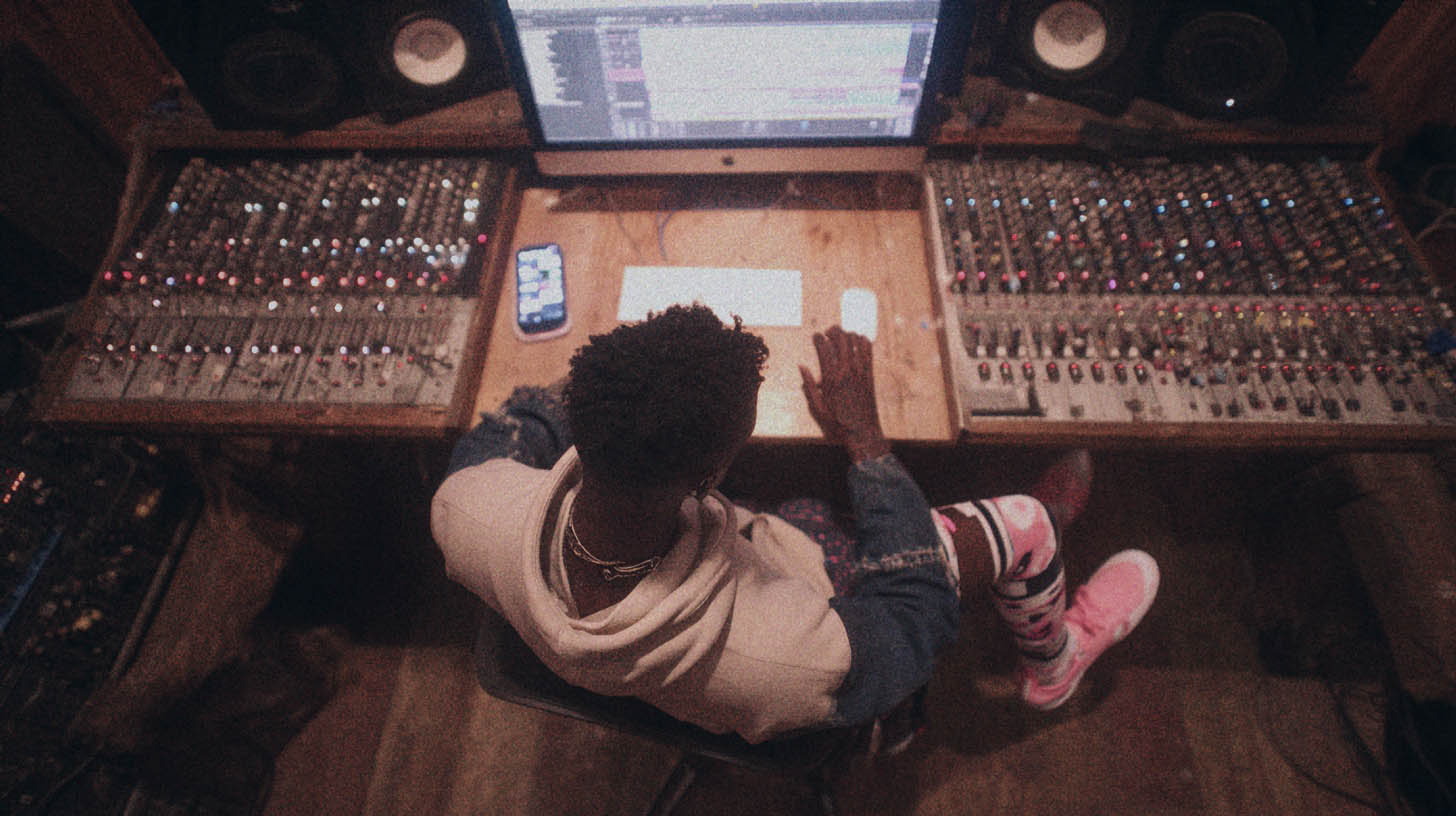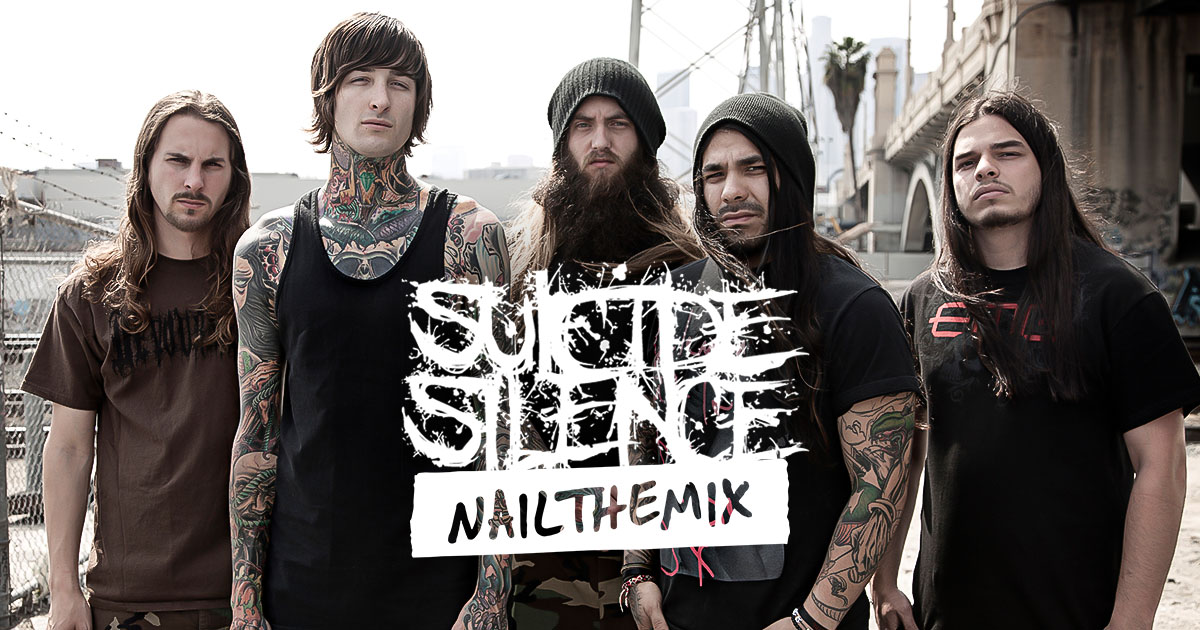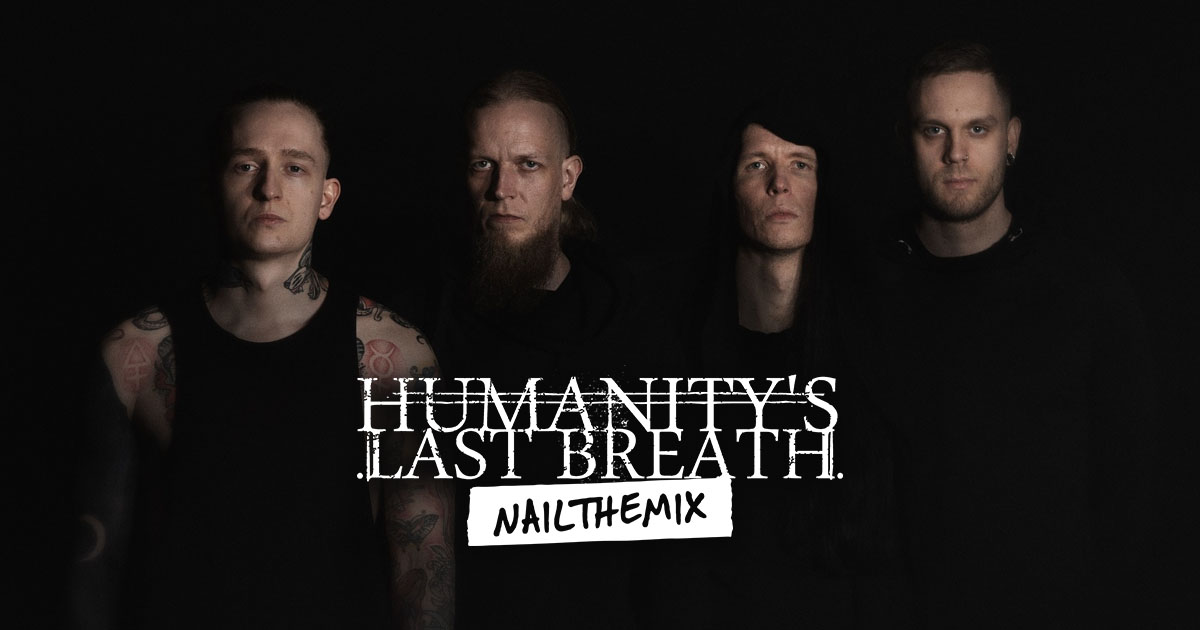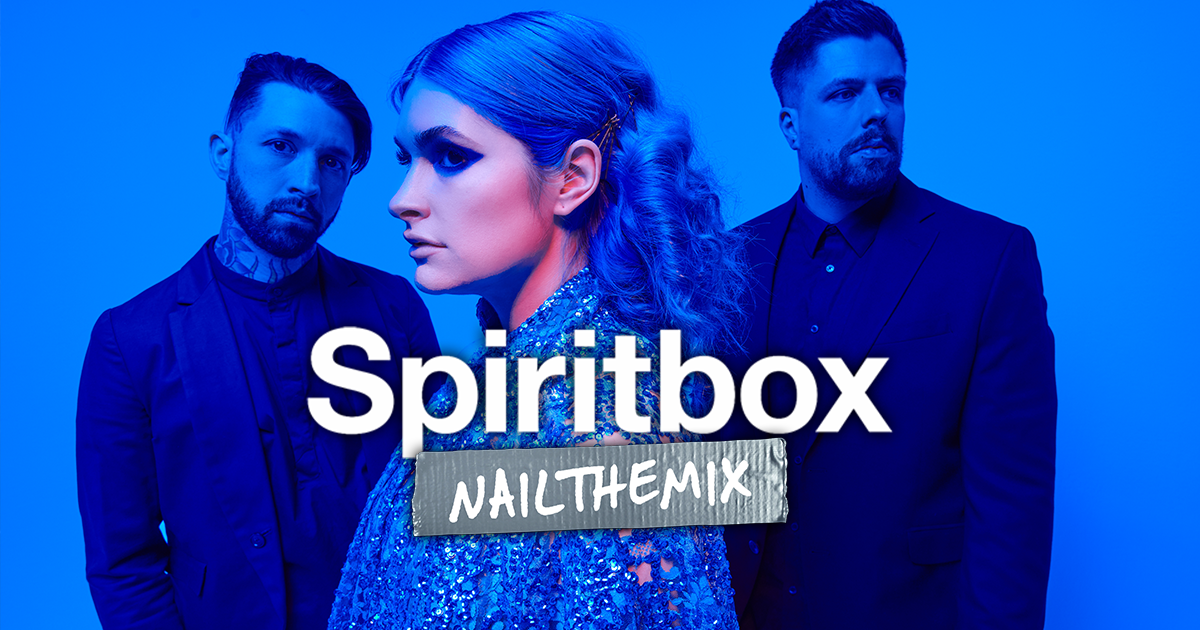
What is a Chorus: an underrated effect for metal producers
Nail The Mix Staff
Chorus. The word probably makes you think of cheesy 80s power ballads or that wobbly, seasick guitar tone your uncle gets from his ancient multi-fx unit. And yeah, used badly, it can absolutely suck the life and punch out of a metal track. But hold up – before you blacklist it entirely, know this: chorus, when you actually understand what it’s doing and how to wrangle it, can be a seriously cool tool in your metal production arsenal. It's not always about drenching everything; sometimes it's the secret sauce for width, vibe, or solving a tricky mix problem. Let's dive in.
The Guts of the Effect: What's a Chorus Actually Doing?
So, no magic here. At its core, a chorus pedal or plugin, like your trusty Boss CE-2W pedal or a plugin like Logic Pro’s built-in Chorus, takes your original signal, makes a copy (or several), slightly detunes these copies, and then uses a Low-Frequency Oscillator (LFO) to make the pitch of those copies wiggle up and down. Think of it like having a ghostly, slightly out-of-tune guitar player shadowing your main riff.
Here are the key parameters you'll usually find:
- Rate: How fast that LFO is wiggling. Crank it for frantic warbles (maybe cool on a synth, probably death for tight rhythms), keep it slow for subtle movement.
- Depth: How much the pitch is bending. Too much, and you're in seasick territory. Subtle depth is often your friend in metal.
- Mix/Wet/Dry: Crucial. This blends your original (dry) signal with the chorused (wet) signal. For metal, you'll often be leaning heavily towards the dry side, especially on rhythm guitars.
- Delay Time/Pre-Delay: Some chorus units, like Eventide's H3000 emulations (check out the MicroPitch preset on an Eventide H9 or the plugin versions like H3000 Factory), let you tweak the initial delay of the copied signals before the modulation kicks in. This can change the character from tight doubling to a more spacious, slap-like effect.
- Feedback: Some choruses feed the modulated signal back into the input for a more intense, sometimes flanger-like effect. Use with caution!
Chorus on Metal Guitars: Treading Carefully for Max Impact
Alright, let's talk guitars. This is where chorus can be amazing or absolutely ruin your tight, chugging rhythms if you're not careful. Most of the time, for those downtuned, palm-muted riffs, you want clarity and punch, not a warbly mess.
The Ultra-Subtle Width Trick for Rhythm Guitars
This is where chorus can be a sneaky bastard. Instead of an obvious effect, think of it as a way to add a bit of stereo spread and movement to your already doubled or quad-tracked rhythm guitars. The goal isn't to hear the chorus, but to *feel* a slightly wider, more enveloping guitar sound.
- How to do it: Slap a simple chorus like TAL-Chorus-LX (it's free, modeled on the Juno-60, and surprisingly good) on a guitar bus, or as an insert on individual tracks.
- Settings: Keep the Rate super low (like 0.1Hz – 0.5Hz). Depth also minimal. The crucial part? Your Mix knob. We’re talking like 5-15% wet. You're just seasoning the tone.
- Pro Tip: Some engineers swear by plugins like Soundtoys MicroShift for this. It's technically more of a pitch shifter/doubler, but it creates a similar widening effect that’s perfect for making guitars feel bigger without getting muddy. Try its 'Style I' with a low mix.
Clean Passages & Leads: Where Chorus Can Shine
This is more familiar territory. For those atmospheric clean intros (think Opeth, or the classic Metallica "Sanitarium" vibe), or for soaring melodic leads, chorus is your buddy. It adds that shimmer and movement that makes clean tones sing.
- Gear & Plugins: A classic Boss CE-2 or its Waza Craft version (CE-2W) is legendary for a reason. Plugin-wise, the TC Electronic SCF emulation (like the one from Universal Audio or Softube) is killer. Even your DAW’s stock chorus can work wonders here.
- Settings: You can be a bit more generous with Rate and Depth here, but always listen in context. Does it make the lead cut through or get lost in washy goo?
- Actionable detail: Try pairing chorus with a nice delay, like a TC 2290 emulation (e.g., UAD TC 2290, or the Lexicon-esque character of Native Instruments RC 24/48) for truly epic lead sounds.
Going Full Weirdo: Chorus for Special FX
Sometimes, subtle isn't the goal. Want a truly mangled, underwater sound for an interlude? Crank that Rate and Depth. Modulate the parameters with automation for evolving textures.
- Experiment: Try putting a chorus before a high-gain amp sim like a Neural DSP Archetype plugin or a Positive Grid BIAS Amp. The way the amp reacts to the modulated signal can be pretty wild. Combine it with a phaser or flanger for total chaos.
Don't Forget the Rest of the Mix: Chorus Beyond Guitars
Guitars get a lot of love, but chorus can be useful elsewhere in your metal mix.
Vocals: Width, Vibe, and Depth
For backing vocals, a touch of stereo chorus can help them spread out and create a lush backdrop without cluttering the center where your lead vocal sits.
- Plugin approach: Waves Doubler is a classic for vocal widening, often using detuning and delay, similar principles to chorus. Or try a subtle chorus like Valhalla Space Modulator with a wide stereo setting.
- Lead Vocals: Be careful here. Too much chorus can make a lead vocal sound dated or weak. But for a specific effect – maybe a dreamy part, or a slightly detuned character on a scream if you're feeling brave – it can work. Always check in mono!
- Pro Tip: Send your vocals to an aux track, apply the chorus there, and then EQ the chorus return (see EQ section below). This gives you way more control.
Bass Guitar: The Danger Zone (But Sometimes Awesome)
Generally, slapping a chorus on your main bass track in a metal mix is asking for trouble. It can eat up low-end headroom, cause phase nightmares, and make your bass sound undefined. That solid low-end foundation is critical.
- When it can work:
- Distorted Bass Layers: If you have a DI bass track and a separate distorted bass track (maybe from a SansAmp RBI or a Darkglass pedal/plugin), you could subtly chorus the distorted layer. High-pass the chorus return heavily (like up to 200-300Hz) so you're only getting the modulated mids and highs. Blend it in super low. This can add some interesting grind and width.
- Fretless Bass: If you’re lucky enough to have fretless bass, chorus is almost mandatory for that classic "mwah" sound.
- Justin Chancellor (Tool) vibe: He famously uses a Boss CE-5 and BF-2 Flanger. He’s not exactly playing straight-up chug metal, but it shows chorus can work on bass in heavier contexts if the part and tone support it.
- Key takeaway: If you’re chorusing bass, parallel processing is your friend, and be aggressive with high-passing the effect. And make sure your core bass tone is solid; good compression is essential here.
Synths, Pads, and Soundscapes: Open Season
If your metal incorporates synths, pads, or orchestral elements (think bands like Dimmu Borgir or Fleshgod Apocalypse), chorus is a fantastic tool. It’s perfect for adding movement and richness to synth leads, making pads feel wider and more immersive.
- Plugin options: Arturia’s Juno-6 Chorus (part of their V Collection) is a go-to. Most synth VSTs, like Serum or Massive, have excellent built-in chorus effects. Experiment with them!
Pro Tips for Dialing In Your Chorus Like a Boss
Knowing what a chorus does is half the battle. Knowing how to make it sound good in a dense metal mix is the other half.
The "Less is More" Golden Rule (Especially for Rhythms)
We've said it before, but it bears repeating: for metal, especially on rhythm guitars and bass, subtlety is usually king. Use that Mix/Wet/Dry knob. If you can distinctly hear the 'wobble' of the chorus on your main riffs, you've probably gone too far. Aim for a feeling of space or movement, not an obvious effect.
EQ is Your Best Friend: Carving Space for the Chorus
Don't just slap a chorus on and call it a day. EQ the effect itself, especially if you're using it on an aux send.
- High-Pass Filter (HPF): Almost always a good idea. Roll off the low end of the chorus return (e.g., below 100-200Hz, or even higher for guitars) to prevent mud and keep your low frequencies tight and punchy.
- Low-Pass Filter (LPF): Sometimes, the high frequencies of a chorus can sound fizzy or clash with cymbals and the natural top end of your guitars. Gently roll off the highs of the chorus (e.g., above 8-10kHz) to make it sit better.
Smart EQing of your effects is just as important as EQing your main tracks.
Stereo Width: Go Wide or Stay Focused?
Most chorus plugins offer stereo operation, which is great for creating that wide, enveloping sound. But don't discount mono chorus! Sometimes, a mono chorus, panned carefully, can add character without washing out the stereo field.
- Advanced Tip: Some plugins like Valhalla Space Modulator or Eventide TriceraChorus have multiple chorus voices and complex stereo modes. Play with these to find what works for your track.
To Sync or Not To Sync? (The LFO Rate Question)
Many chorus plugins allow you to sync the LFO Rate to your DAW's tempo. This can create cool rhythmic pulsing effects, especially if the rate is set to a musical subdivision like 1/4 or 1/8 notes.
However, for a more organic, less obviously 'synced' feel, leave the LFO free-running. This often sounds more natural for subtle widening effects.
Series vs. Parallel Processing: Know the Difference
- Series: The chorus is an insert directly on your audio track. The entire signal goes through the effect, and you use the Mix knob to blend. Simpler setup.
- Parallel: You send your audio track to an auxiliary (aux) track via a send. The chorus plugin is on this aux track, set to 100% wet. You then blend the chorused aux track back in with your original dry track. This gives you more control over the EQ and level of the effect independently. For subtle chorus, parallel is often the way to go.

100+ Insanely Detailed Mixing Tutorials
We leave absolutely nothing out, showing you every single step
See How the Pros Really Use Chorus (And Way More) with Nail The Mix
Look, reading about LFOs, wet/dry knobs, and EQing your chorus return is a solid start. You can grab a plugin like FabFilter Saturn 2 for some warm saturation (not a chorus, but an example of a pro tool you might see used creatively) or dive into the deep parameters of Kilohearts Ensemble. But seeing how a top-tier metal producer actually decides when and how to use (or deliberately avoid) chorus on a real track from a band like Periphery or Gojira? That’s next-level insight.
Maybe they're using a super-subtle chorus on a clean guitar bus, just to give it a bit of life. Or perhaps they're crafting a unique vocal effect with a chain that includes chorus, delay, and distortion. These are the kinds of creative, in-the-moment decisions that separate decent mixes from killer ones.
If you're tired of guessing and want to see exactly how the pros sculpt massive metal tones, achieve punchy drums, and get vocals to sit perfectly, Nail The Mix is where it's at. You get the raw multitracks from huge metal songs, and watch the original producers mix them from scratch, explaining every plugin choice, every fader move, every creative spark.
Ready to elevate your metal mixing game from the bedroom to pro-level? Dive deep into mixing modern metal with Nail The Mix and learn beyond presets. Find out more at https://www.nailthemix.com/unlock-your-sound-mixing-modern-metal-beyond-presets.
Conclusion: Chorus – Not Just a One-Trick Pony
So, is chorus the answer to all your metal mixing prayers? Probably not. But it's definitely not the cheesy, one-dimensional effect many metalheads write it off as. Used with taste and a bit of know-how, it can add width, depth, character, and unique textures to your tracks.
Don't be afraid to pull up that stock chorus in Cubase, Pro Tools, or Reaper, or explore dedicated plugins like the classic blue Boss CE-2 emulation in your favorite amp sim. Experiment with those rates and depths, play with the mix knob, and always, always listen in the context of your full mix. You might just find that chorus becomes a valuable, if sometimes subtle, part of your metal production toolkit.
Get a new set of multi-tracks every month from a world-class artist, a livestream with the producer who mixed it, 100+ tutorials, our exclusive plugins and more
Get Started for $1




